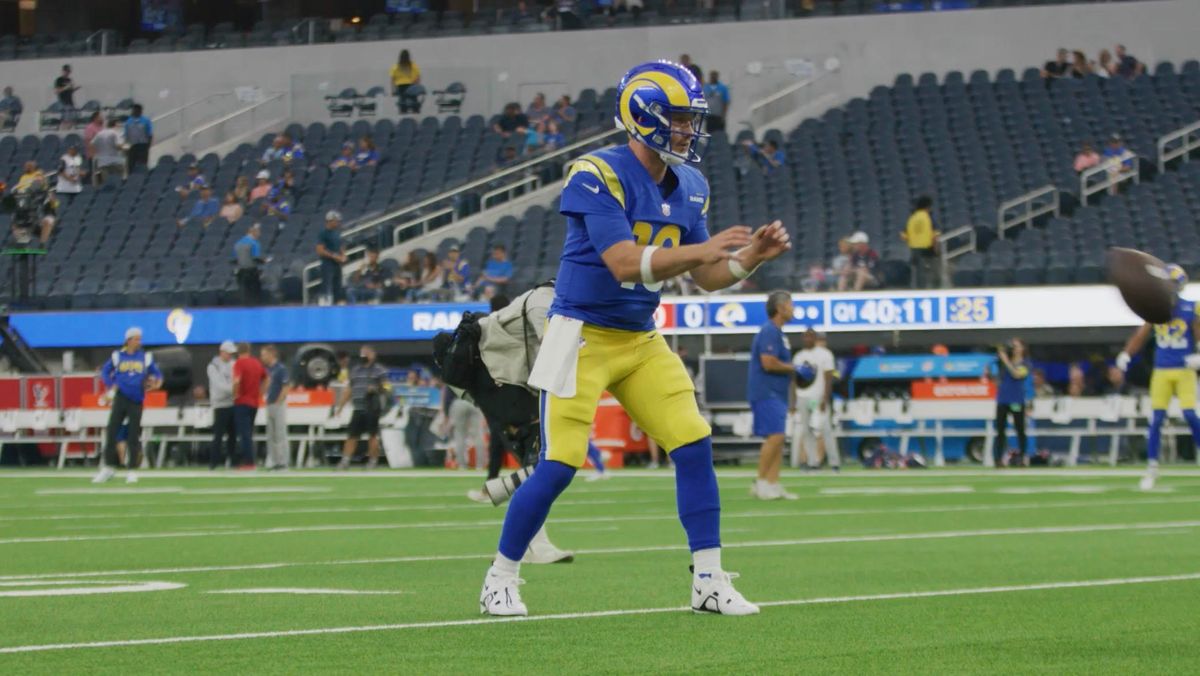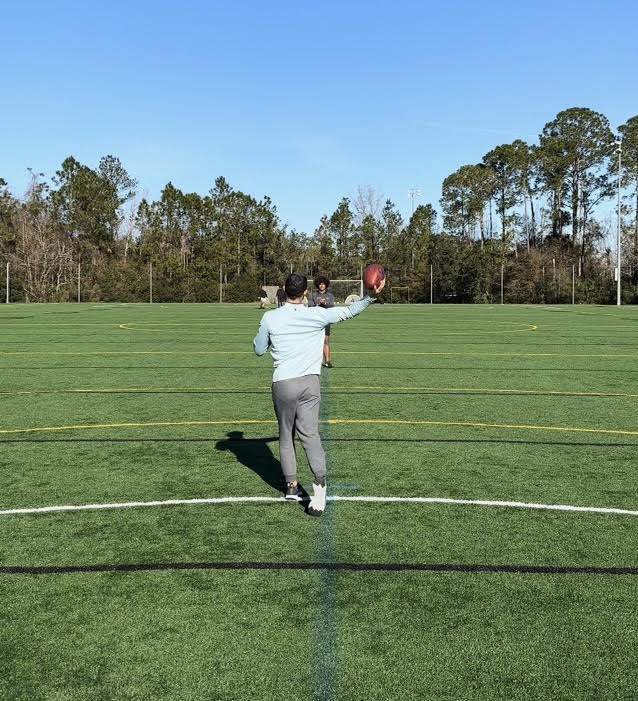Left Foot vs Right Foot Up From an NFL Quarterback's Perspective

Patrick Mahomes plays with his right foot up, Aaron Rodgers plays with his left foot up and Tom Brady has done both, so which stance is the most conducive to success? I frequently get asked this question by younger quarterbacks and their parents. Unfortunately, the anti-climactic answer is… drumroll… that it depends. This short post will give you the benefits of each so you can decide for yourself but first, two quick notes.
· “Quickgame” is a term to describe short route concepts that are paired with one-step drops from the gun and three-step drops from under. This post focuses on quickgame in the gun (one-step drops).
· The left foot versus right foot up stance conundrum only deals with a quarterback’s shotgun stance.
If you're interested in QB specific throwing, lifting and sprint training, customized to you, with the same systems used to train NFL Quarterbacks, take the assessment and get the app at kinetex.co. If you're interested in reading about all things quarterbacking and throwing biomechanics, subscribe to the blog.
Left Foot Up Benefits
1. Harder for cornerbacks to read quickgame: Every well taught NFL cornerback, that is playing visual zone (i.e. with eyes on the QB), is keying the opposing quarterback’s footwork at the snap of the ball. If the QB takes a longer drop, then a cornerback will continue his backpedal. If a quarterback is taking a one step drop to throw a slant, then a cornerback sticks his foot in the ground to drive on the throw (Asante Samuel Jr. is great at this). Poll defensive backs and their coaches around the NFL, and they will tell you it’s harder read to quarterbacks that play with their left foot up. The underlying reason is that the initial steps in a drop always have the same feel. The left foot slides back first, then a quarterback can put his right foot down for quick game, or continue on his drop for deeper route combinations. In contrast, right foot up stances have a noticeably more sudden feel on quick game: catch, bring your right foot back, and throw the slant. It is easier for cornerbacks to notice the more sudden feel of a right foot up stance.
2. Getting open to the left: A common mishap from high schoolers to NFL quarterbacks is not getting open enough to throws on your left. If you are not properly aligned, a common compensation is to cast your arm which, biomechanically, leads to diminished accuracy. If you notice in the picture below, his chest is too far open before his hand has slotted and his arm is disconnected from his body.

When you play with your left foot up, you get an extra step on every drop to increase the likelihood of getting open to your left.
3. More fluid drops: The sequence to throw a seam route with your left foot up is as follows:
Catch ball, left foot slides back, right foot back, left foot again without needing to crossover, right foot in the ground.
Because you get an extra step, you are not pressing to get as much depth away from the line of scrimmage and can play with your feet more underneath you. At the top of a drop, you find your back foot underneath your base (key from a biomechanical standpoint) as you never overextend to get away from the monsters in front of you. You can still get your back foot underneath you with your right foot up but some find it harder to do so.
Right Foot Up Benefits
1. Quickgame happens faster: On a one step drop from the gun the sequence is catch, right foot in the ground, throw. While it may be easier for a cornerback to read your footwork, you also are eliminating a step in your drop compared to a left foot up QB. If you have no issues throwing without the laces, this may be your cup of tea.
2. Familiarity: Most everyone has played with their right foot up at some point and if you feel comfortable in that stance, and are having success, then why change? As Thomas Bertram Lance said, “If it ain’t broke don’t fix it”. But, if you are missing throws left, and feel stiff in your drops, and are getting your slant routes picked off, then maybe try out left foot up to see if it helps.
Conclusion
As often is the case in sports, there isn’t a one size fits all prescription. My arms will never be as long as Patrick Mahomes, so my arm path and sequencing will never look like his does. As much as I want to have longer arms, that is a functional limit that I can’t change. What I can do though, is strive to maximize my potential within the limits (height, arm length, hand size, etc.) that I was given. On that note, footwork is simply a tool that you can tinker with to maximize your production on the field. Personally, having done both, the benefits of playing with my left foot up made it worth the switch. For others it will be different. I’d encourage athletes to explore what works best for you and find the stance that maximizes your output on the field.
If you're interested in QB specific throwing, lifting and sprint training, customized to you, with the same systems used to train NFL Quarterbacks, take the assessment and get the app at kinetex.co. If you're interested in reading about all things quarterbacking and throwing biomechanics, subscribe to the blog.
